If there was one thing that people had often associated Sonic with, aside from being a blue hedgehog with the ability to run extremely fast, it was the fact that he had these unmistakable red-and-white sneakers which helped contrast the character. The shoes themselves, called the Power Sneakers, have been with Sonic since his inception in the original game. The inspiration for the shoes was often cited to be the album cover of Bad by Michael Jackson and that the color scheme made designer Naoto Oshima picture Santa Claus when looking at them. The shoes would often be represented as a red blur underneath the body of Sonic as his feet went into bursts of speed, creating an image that was faster than the eye could see moving in vivid detail. The iconic look of these shoes would stay consistent for Sonic’s look, even as the cast of characters moved into the realm of 3D in Sonic Adventure.
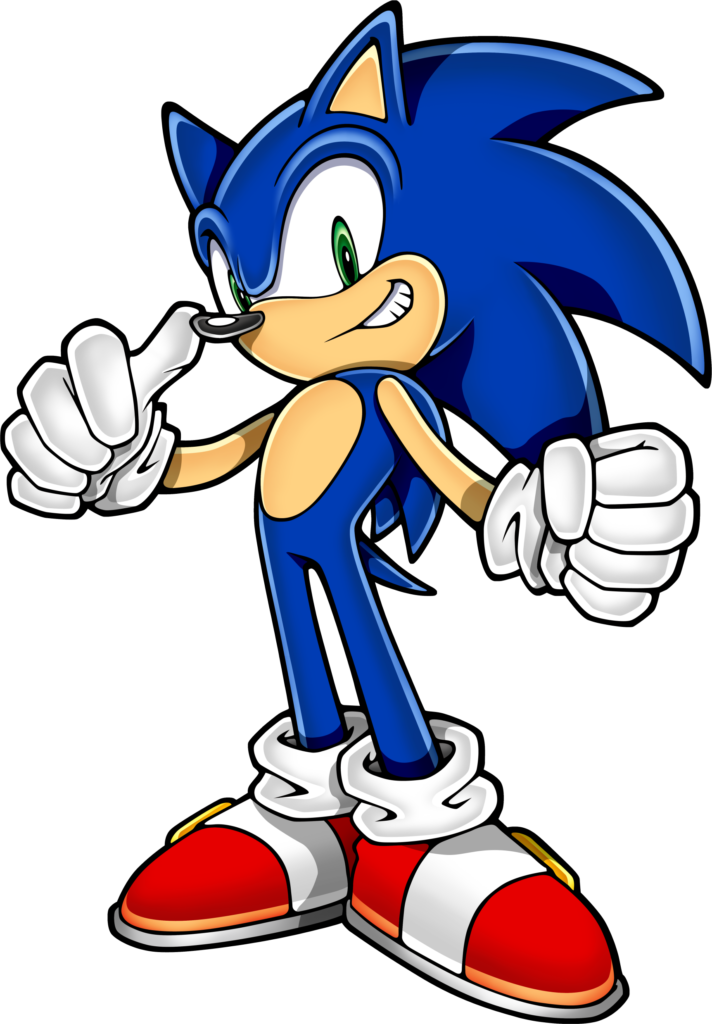
With the success of Sonic Adventure, Sega and Sonic Team would attempt to step up their game by bringing new mechanics to the way Sonic could wow the player and keep the gameplay speedy. One way to do this was to allow Sonic and the newly introduced character Shadow to grind on rails in order to traverse certain parts of their respective levels. As a way to help explain the mechanic, the developers of Sonic Adventure 2 would create a new pair of shoes for Sonic. It is interesting to note though that this change to the character also came after a partnership was made with a real world company who sold their own grindable shoes called Soap shoes.

Soap shoes were introduced by Chris Morris, a former worker for RollerBlade, back in 1997. The shoe contained a plastic piece that was concave and inserted in the sole that allowed people to grind on rails and the like. The act of grinding using the shoes specifically was later dubbed “soaping” and became popular from live demonstrations and internet videos showing off the product. Skateboarding was a huge market in the early 2000s and the shoe was capitalized to take advantage of the market. By design, the shoe was a perfect match to showcase Sonic’s new ability to grind on rails in the sequel to Sonic Adventure, although the implementation of the shoes into Sonic’s character model was done so late in the development of the game. This can be seen from earlier screenshots showing Sonic in his Power Sneakers while the game clearly has Sonic sporting his new shoes throughout the entirety of the finished product: the Hi-Speed Shoes.
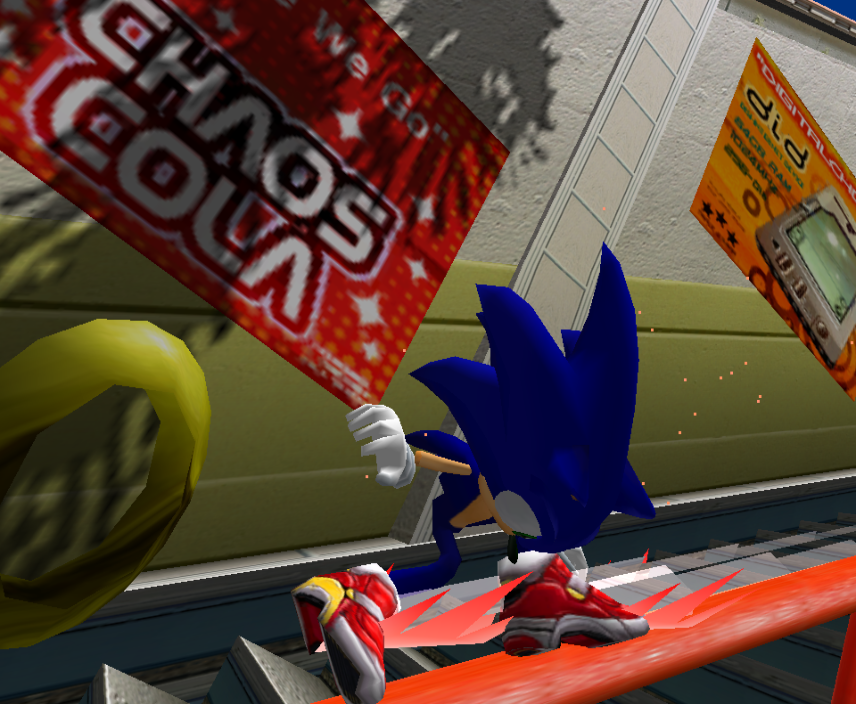
The Hi-Speed Shoes were very different from Sonic’s power sneakers in that they were angular, with heels that were accented with white-and-yellow sections meant to show off how a rail could fit into the space. Aside from this, the shoes looked more like actual sneakers instead of Sonic’s more loose foot covering. Sonic could be seen sporting these new kicks as soon as the game booted up and our hero jumped out of the G.U.N. helicopter into the lower section of the city in the City Escape level of Sonic Adventure 2. As Sonic made it further into the city in order to evade capture, he would find a rail and begin grinding on it once the player made the connection with the character model. As players sped through the level, they could also see advertisements on billboards, benches, and even the occasional blimp for Soap shoes with a internet address for the company underneath their logo. The partnership with Sega was used to not only feature Sonic wearing a modified version of the Scorcher/Nitro shoe made by the company but also featured the heavy advertisements seen in the game itself. This tactic helped the shoe company gain traction (no pun intended) and lead to more sales for the shoe.
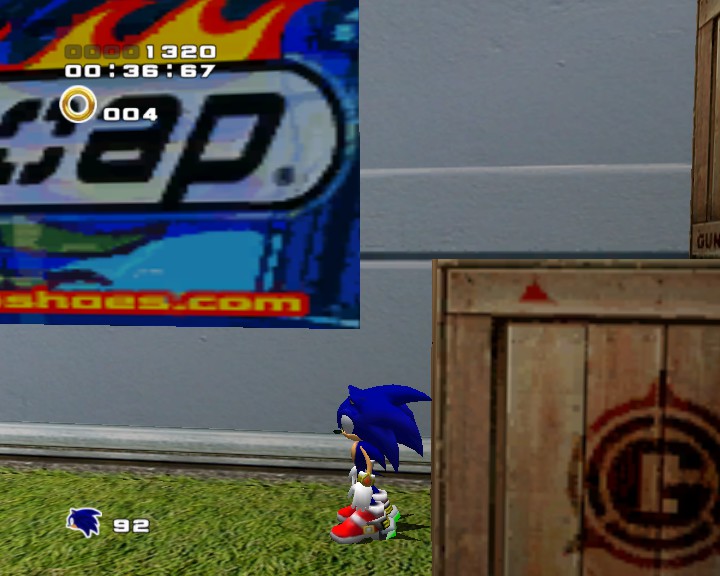
Being a younger kid around the time of Sonic Adventure 2’s release, I remember seeing the shoe advertisement and being absolutely stunned when I realized that you could actually purchase a pair of the shoes and grind on rails. My mother, who was still hesitant of buying things online back in 2001, had searched high and low for the shoes for months. It wouldn’t be until the Christmas of 2001 that she would have luck finding a pair for me. I remember opening the wrapped-up box and discovering my own beautiful pair of Scorcher Soap shoes in red, the closest thing I could get to the ones Sonic had. The shoes were actually pretty brilliant at the time for the people who could use them, utilizing a plastic-like insert in the heel to reduce the friction of the material on a proper surface that would send someone grinding down whatever their feet connected with. Since I was still quite young and not hardly cut out to skateboard or anything of that nature, it took some getting used to but I would eventually find ways to take advantage of the shoes for at least a little while.
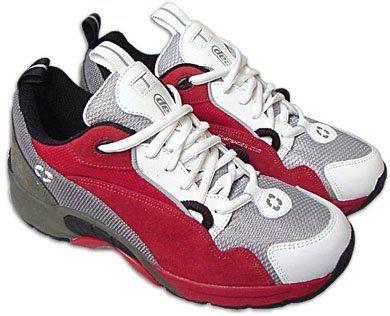
The feeling of grinding on a rail or pipe, with nothing but your own pair of shoes, takes some trust in yourself to not wipe out completely. Couple this with the fact that you needed to get a good bit of momentum for the shoes to do their job and it often left me with more bruises and cuts than successful attempts at grinding. However, you can’t deny that this advertisement move was one that was smart for Sonic Team from both a technical perspective and as an advertisement platform. Not only did the shoes’ design help explain Sonic’s new platforming mechanic and help the team develop the levels with this in mind but a player could literally purchase the exact same shoe and potentially do the maneuvers their favorite hedgehogs were doing in the games.

While the Soap shoes brand and patent would eventually be sold to another company and the partnership between the companies dissolved, there still remains the memory of the time when video game companies would peddle real-world goods in their games and alter their own characters to do so. Was the changing of Sonic’s shoes that big of a deal? Not really. Sonic’s actual shoes themselves retained no branding or name and that was part of the reason that I never really faulted Sega and Sonic Team for their joint venture with Soap. The shoes would eventually be swapped back out with the Power Sneakers as early as Sonic Heroes but there are subtle references to the shoes should a player know where to look.
What did you think about the implementation of Sega advertising the shoes in Sonic Adventure 2? Do you prefer the look of the Power Sneakers or the Hi-Speed shoes? Did you own a pair of Soap shoes? Sound off in the comments below and thanks for reading!

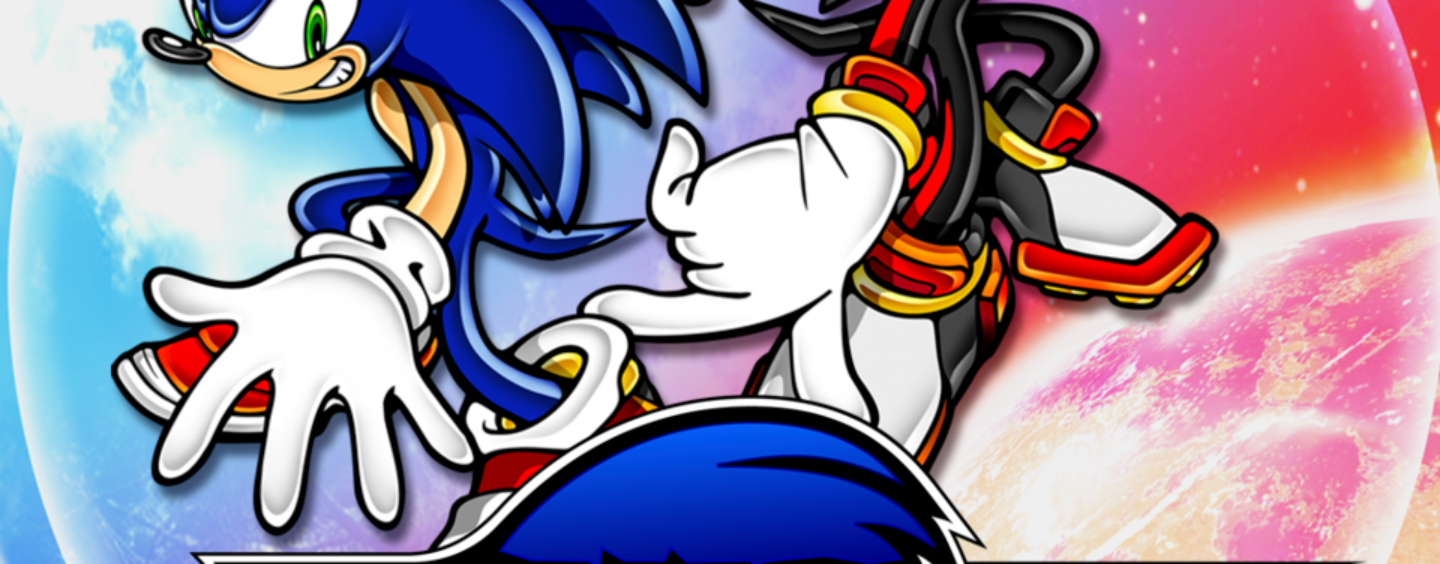


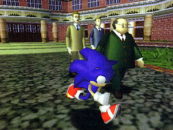
No Comments so far
Jump into a conversationNo Comments Yet!
You can be the one to start a conversation.